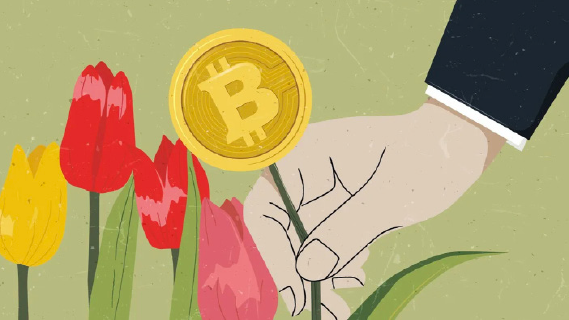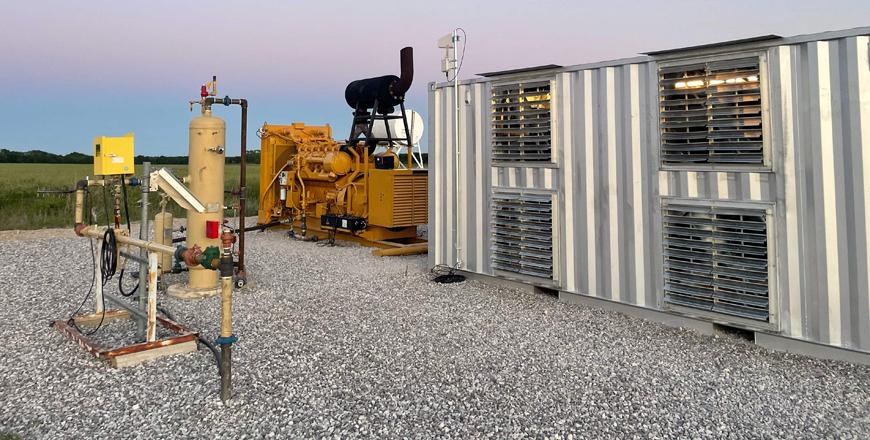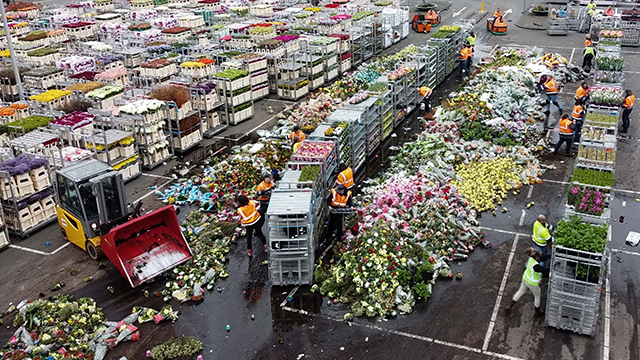You are here
Dutch use bitcoin mining to grow tulips
By AFP - Dec 14,2022 - Last updated at Dec 14,2022

Photo courtesy of wordpress.com
AMSTERDAM — Tulips and bitcoin have both been associated with financial bubbles in their time, but in a giant greenhouse near Amsterdam the Dutch are trying to make them work together.
Engineer Bert de Groot inspects the six bitcoin miners as they perform complex sums to earn cryptocurrency, filling the air with a noisy whine along with a blast of warmth.
That warmth is now heating the hothouse where rows of tulips grow, cutting the farmers’ reliance on gas whose price has soared since Russia’s invasion of Ukraine.
The servers in turn are powered by solar energy from the roof, reducing the normally huge electricity costs for mining, and cutting the impact on the environment.
Meanwhile, both the farmers and de Groot’s company, Bitcoin Brabant, are earning crypto, which is still attracting investors despite a recent crash in the market.
“We think with this way of heating our greenhouse but also earning some bitcoin we have a win-win situation,” flower farmer Danielle Koning, 37, told AFP.
The Netherlands’ love of tulips caused the first stock market crash in the 17th century when speculation bulb prices caused prices to soar, only to later collapse.
Now The Netherlands is the world’s biggest tulip producer and also the second biggest agricultural exporter overall after the United States, with much grown in greenhouses.
‘Improving the environment’
But the low-lying country is keenly aware of the effect of the agricultural industry on climate change, while farmers are struggling with high energy prices.
Mining for cryptocurrency, meanwhile, requires huge amounts of electricity to power computers, leading to an environmental impact amid global efforts to tackle climate change.
De Groot, 35, who only started his business earlier this year and now has 17 clients including restaurants and warehouses, says this makes bitcoin and tulips a perfect fit.
“This operation is actually carbon negative, as are all the operations I basically build,” says the long-haired de Groot, sporting an orange polo shirt with his firm’s logo.
“We’re actually improving the environment.”
He is also selling tulips online for bitcoin via a business called Bitcoinbloem.
The collaboration started when Koning saw a Twitter video de Groot had made about bitcoin mining, and called him up.
Now there are six servers at their hothouse, whose exact location Koning asked to keep secret to avoid thieves targeting the 15,000-euro machines.
Koning’s company owns half of them and keeps the bitcoin they produce, while de Groot is allowed to keep his three servers there in exchange for monthly visits to clean dust and insects out of the servers’ fans.
With a 20ºC difference between the air entering the machine and leaving them, this provides the heat needed to grow the tulips, and to dry the bulbs that produce them.
‘No worries’
“The most important thing we get out of it is, we save on natural gas,” says Koning. “Secondly, well, we earn Bitcoin by running them in the greenhouse.”
Huge energy costs have driven some Dutch agricultural firms that often rely on greenhouses to stop growing this year, while others have even gone bankrupt, says Koning.
Meanwhile, the philosopher Nassim Nicholas Taleb, who developed the idea of the unpredictable but historic “black swan” event, has compared Bitcoin to the “Tulipmania” that engulfed The Netherlands nearly 400 years ago.
This saw prices for a single bulb rise to more than 100 times the average annual income at the time before the bubble burst in 1637, causing banks to fail and people to lose their life savings.
The cryptocurrency sector is currently reeling from the collapse of a major exchange — with Bitcoin currently worth around $16,300 per unit, down from a high of $68,000 in November 2021 — but De Groot isn’t worried.
“I have absolutely no worries about the long-term value proposition of an immutable monetary system,” he says.
“Bitcoin will last for ever.”
Related Articles
LONDON — Bitcoin on Friday rose above $45,000, boosted by talk that the Kremlin could accept the world's biggest cryptocurrency in exchange
Obtaining Bitcoin is an energy intensive endeavor, and the chart showed the evolution of its power usage, rising constantly from 2016 and accelerating sharply in 2020 on an annualized basis to hit its current level of 149 terawatt-hours (TWh), an all-time high.
NAALDWIJK, Netherlands — It is tulip season in The Netherlands but this year growers are destroying millions of flowers a day, in unpr
















